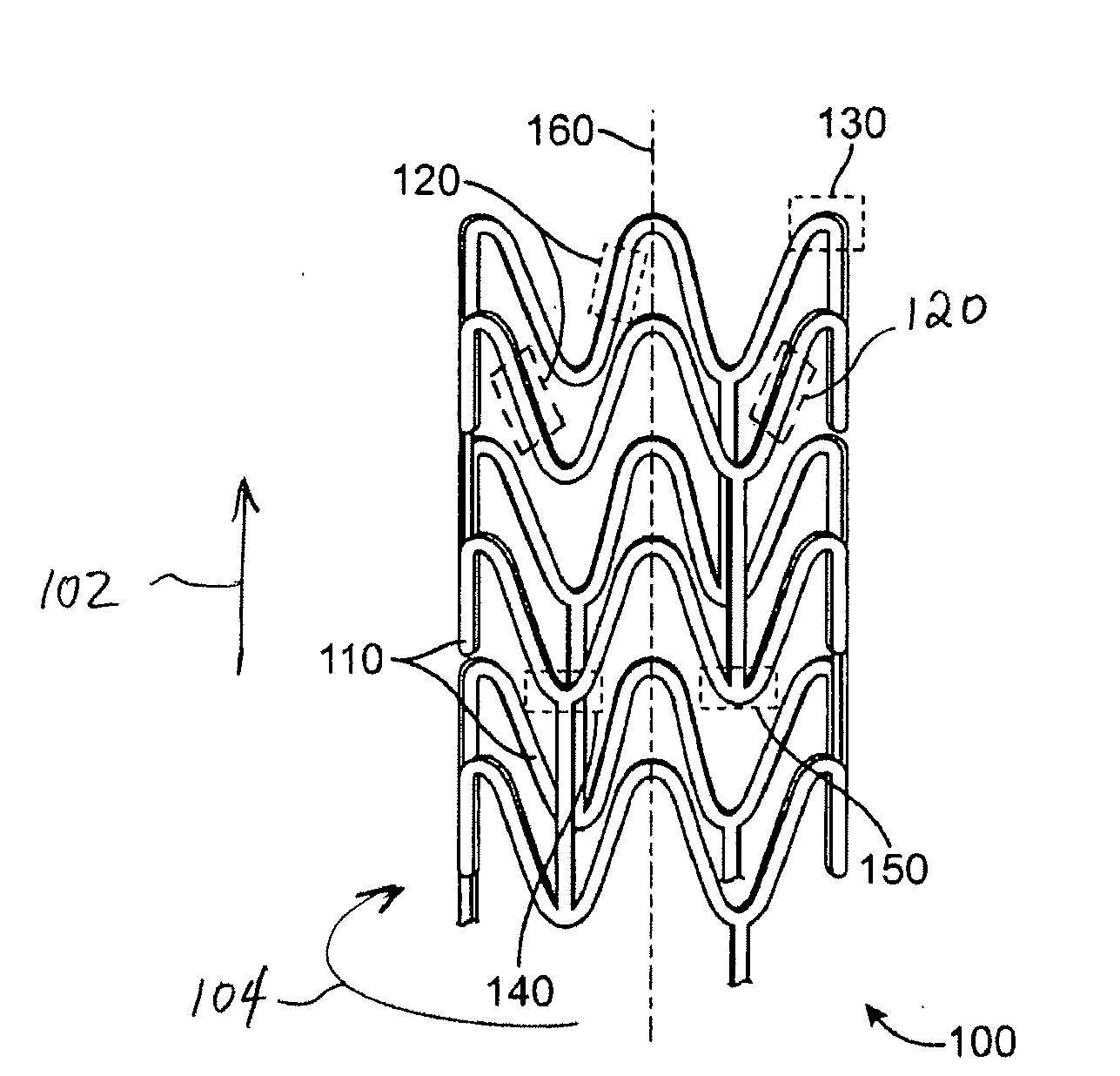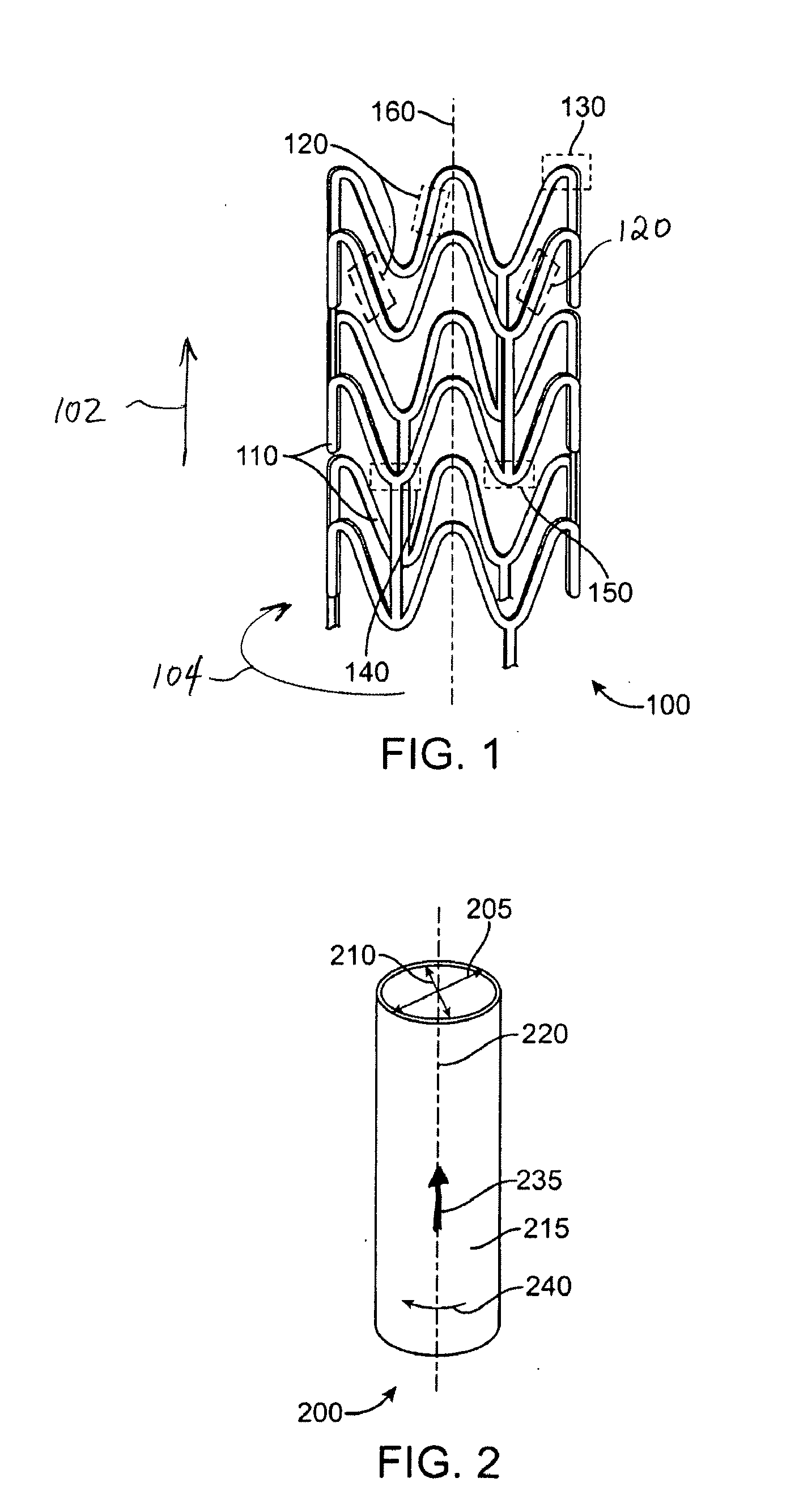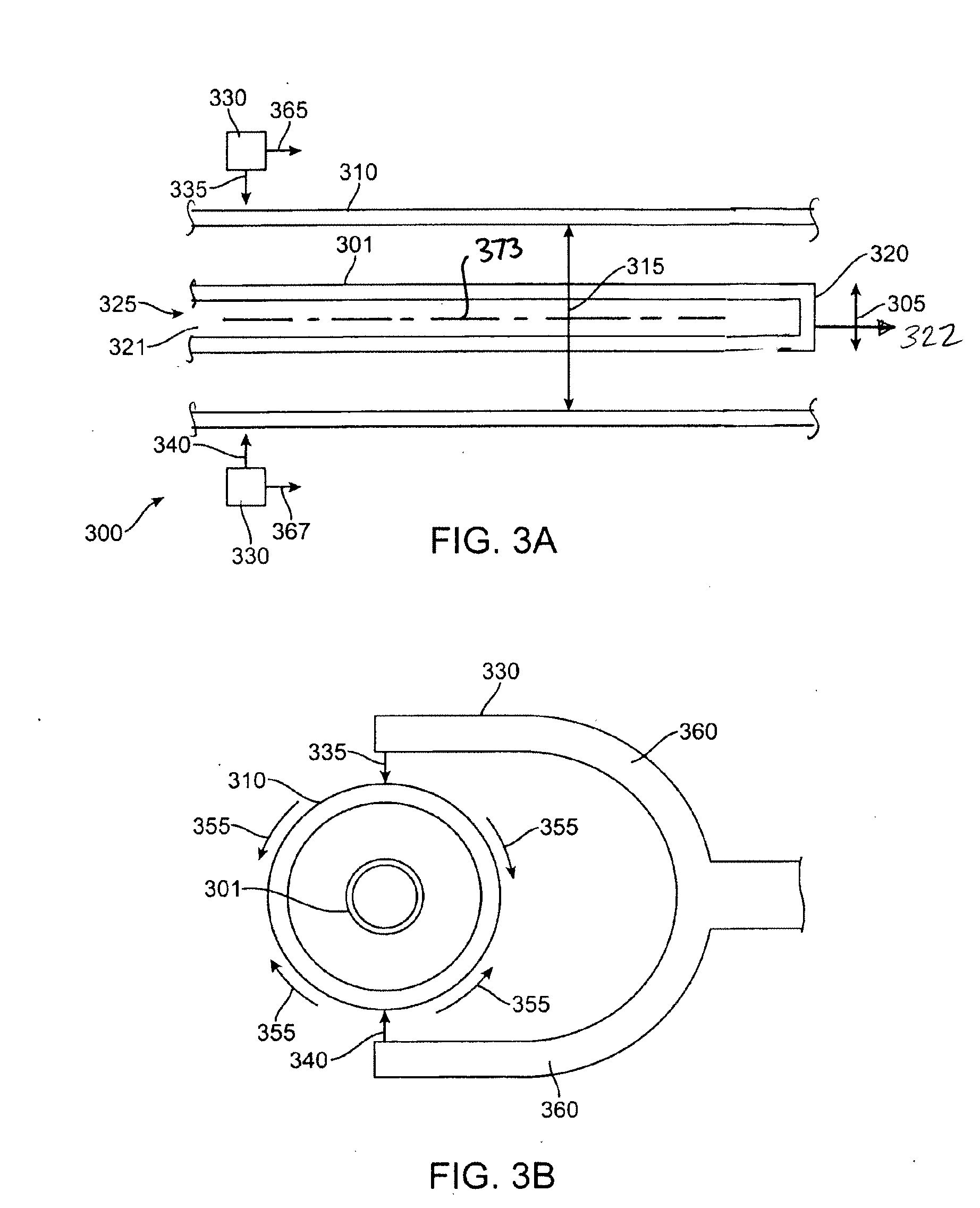Polymeric Stent and Method of Making Same
- Summary
- Abstract
- Description
- Claims
- Application Information
AI Technical Summary
Benefits of technology
Problems solved by technology
Method used
Image
Examples
Embodiment Construction
[0026]The various embodiments of the present invention relate to methods of fabricating a polymeric stent that has good or optimal toughness and selected mechanical properties along the axial, radial and circumferential directions. The present invention can be applied to devices including, but is not limited to, self-expandable stents, balloon-expandable stents, stent-grafts, grafts (e.g., aortic grafts), and generally to tubular implantable medical devices.
[0027]For the purposes of the present invention, the following terms and definitions apply:
[0028]The glass transition temperature (referred to herein as “Tg”) is the temperature at which the amorphous domains of a polymer change from a brittle vitreous state to a solid deformable or ductile state at atmospheric pressure. In other words, Tg corresponds to the temperature where the onset of segmental motion in the chains of the polymer occurs. Tg of a given polymer can be dependent on the heating rate and can be influenced by the t...
PUM
| Property | Measurement | Unit |
|---|---|---|
| Fraction | aaaaa | aaaaa |
| Fraction | aaaaa | aaaaa |
| Fraction | aaaaa | aaaaa |
Abstract
Description
Claims
Application Information
 Login to View More
Login to View More - R&D
- Intellectual Property
- Life Sciences
- Materials
- Tech Scout
- Unparalleled Data Quality
- Higher Quality Content
- 60% Fewer Hallucinations
Browse by: Latest US Patents, China's latest patents, Technical Efficacy Thesaurus, Application Domain, Technology Topic, Popular Technical Reports.
© 2025 PatSnap. All rights reserved.Legal|Privacy policy|Modern Slavery Act Transparency Statement|Sitemap|About US| Contact US: help@patsnap.com



